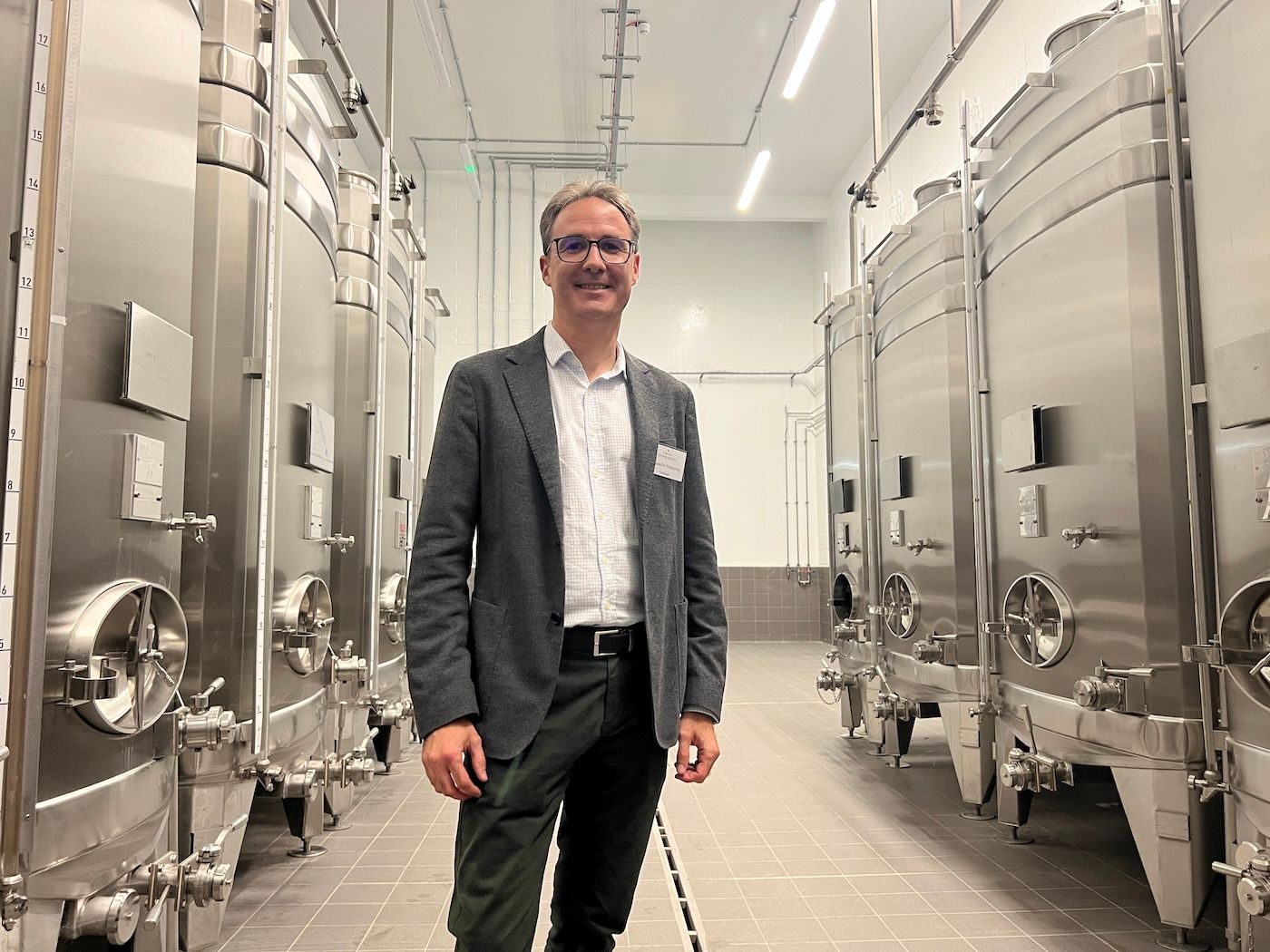Ten years ago I was sat at the private dinner table of a well-known Champagne House and asked the inevitable questions about English sparkling wine. The questions were dismissed with the wave of the hand, like an Emperor would silence an ill-mannered courtier, and a barely-suppressed smirk. Seriously? What do the English know about sparkling wine? Do they seriously think they compete? And so on and so forth.
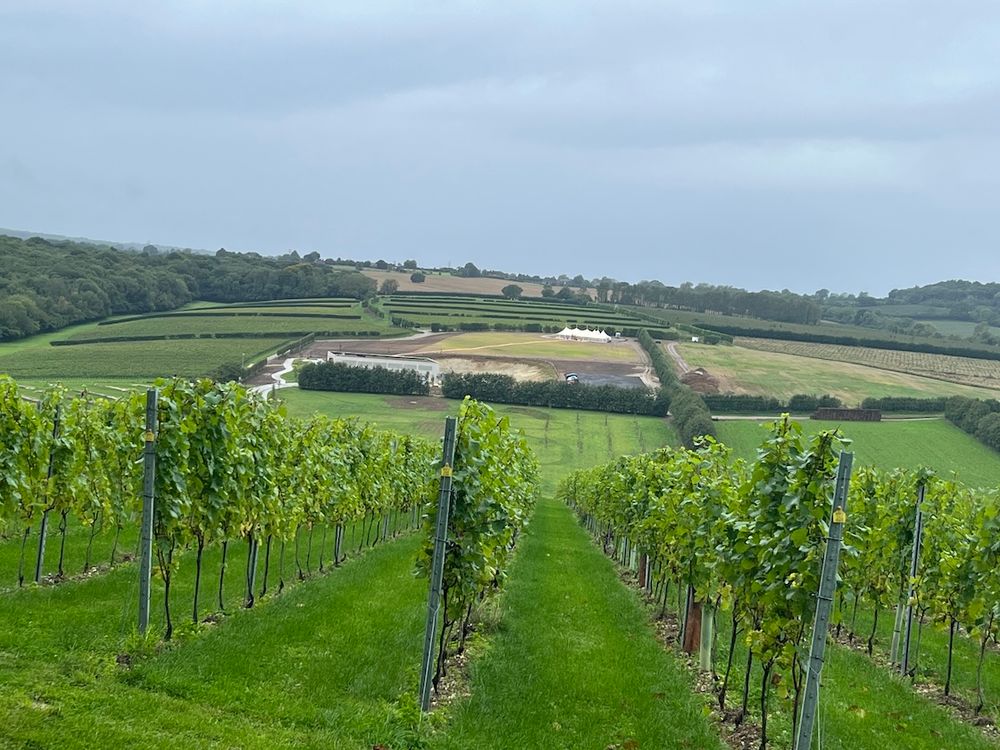
Looking down on Domaine Evermond winery from the top of a Chardonnay vineyard 90m above sea level, September 27, 2024
It was around this same time, 2015, that plans for Domaine Evremond were also being hatched, land acquired from one of the UK’s largest apple growers in Chilham, Kent and plans put in place to produce an English sparkling wine that can compete on the world stage.
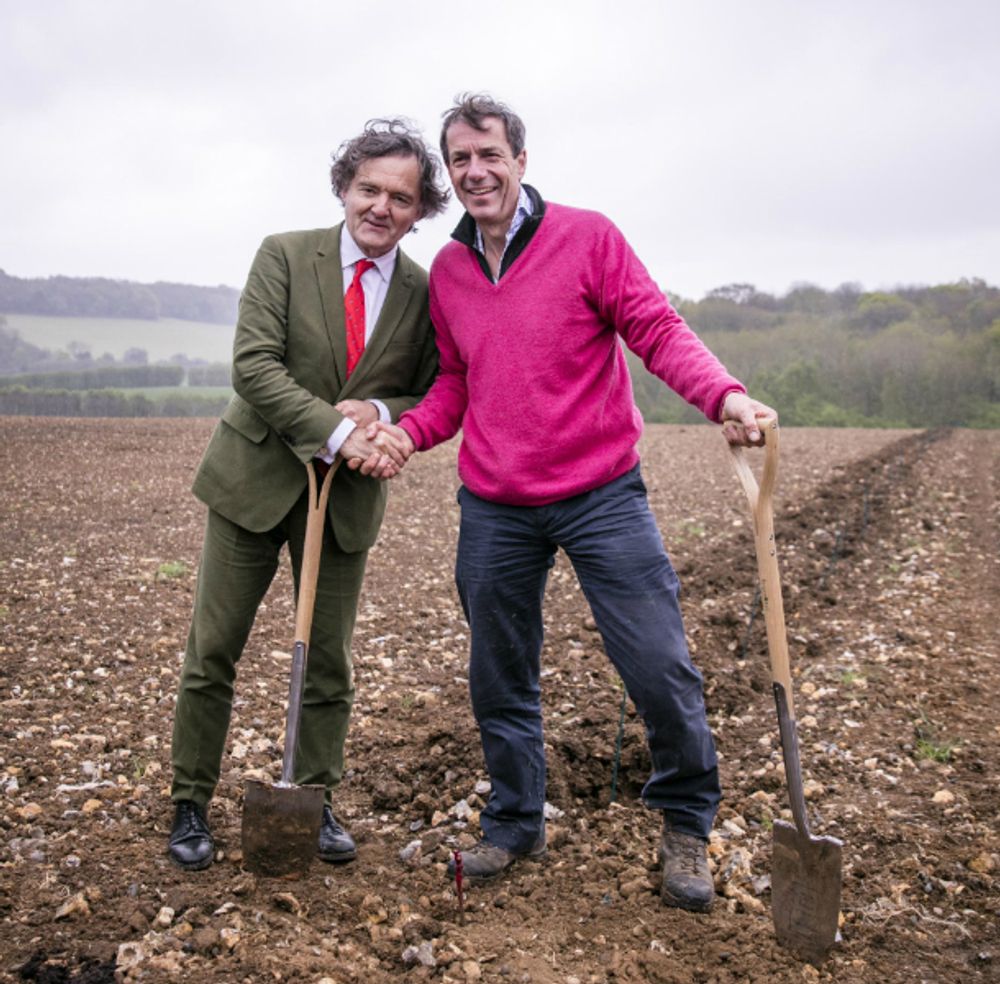
Planting the first vineyards in 2017: Domaine Evremond is the brainchild of Pierre-Emmanuel Taittinger and Patrick McGrath MW (l-r)
What made heads turn was that the major shareholder (51%) of this consortium was none other than Champagne Taittinger; this venerable estate has invested outside France before (a collaboration in California with Kobrand called Domaine Carneros) but never has a Champagne House put such belief and commitment behind an English sparkling wine.
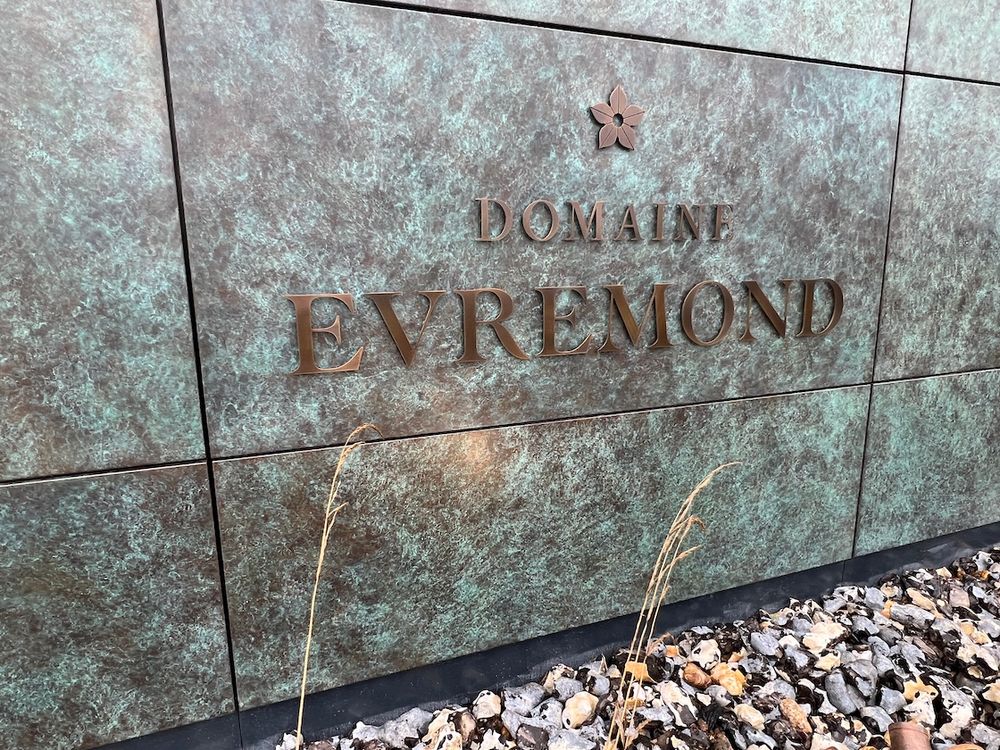
Domaine Evremond is owned by Champagne Taittinger (51%), the rest made up by Hatch Mansfield, the Cadogan family, then individuals mainly from Hatch Mansfield.
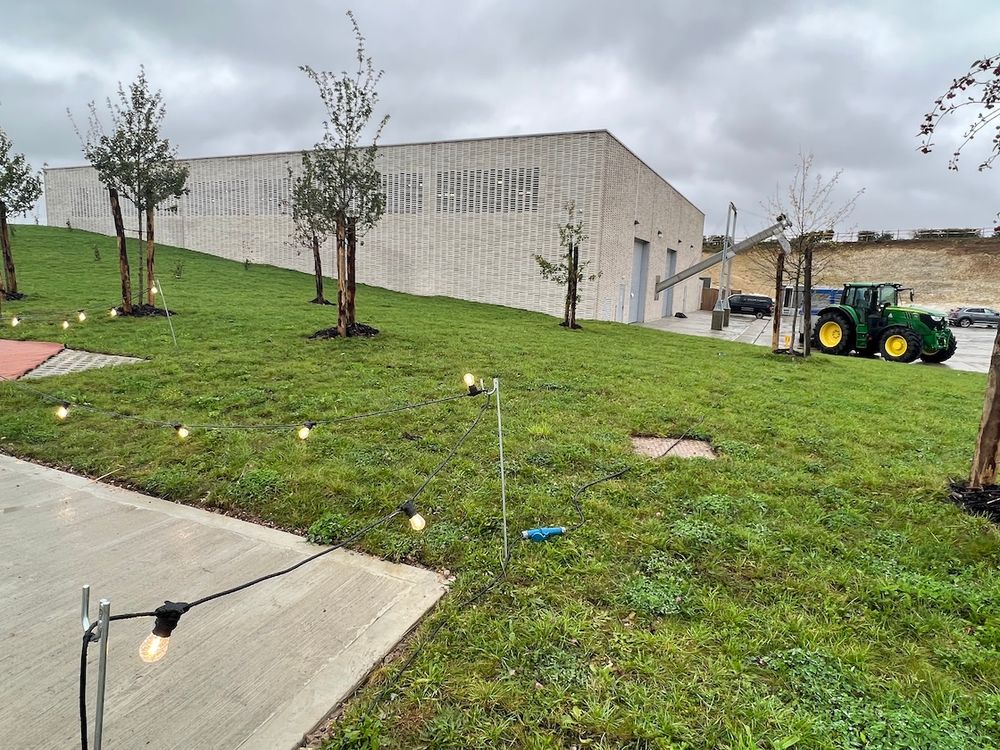
A genuine Anglo-French design-and-build, the winery is two-thirds underground to allow a gravity-fed process and minimise visual impact on the countryside.
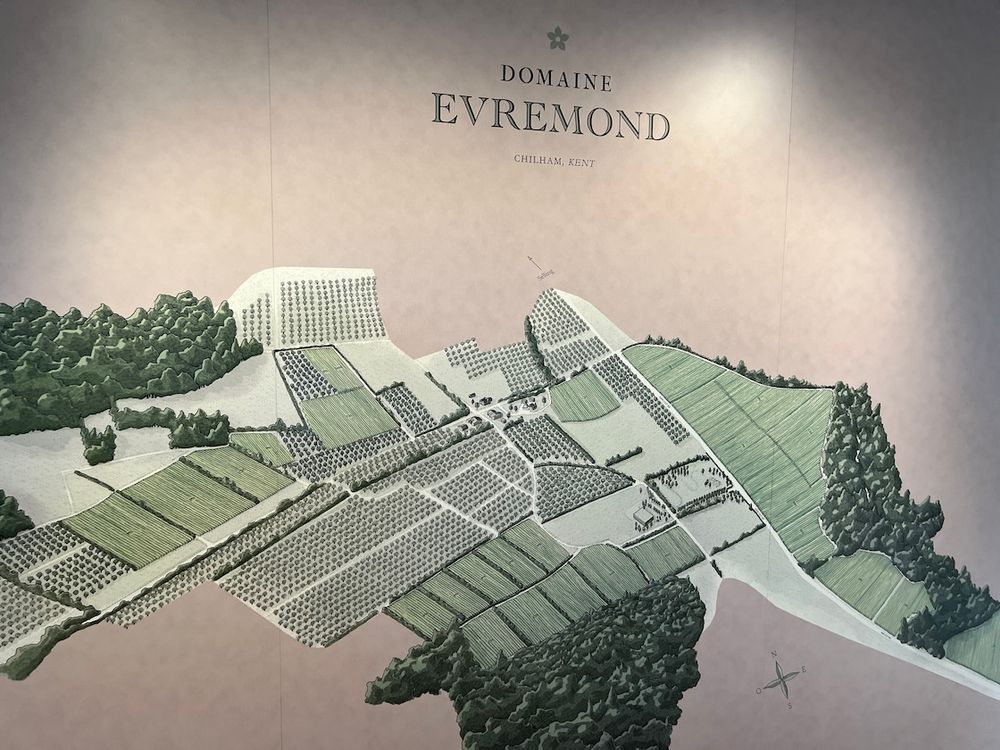
Domaine Evremond comprises 125 hectares of land with 60 hectares planted to vine. The property is named after Charles de Saint-Évremond, cited as being 'the first ambassador of champagne in England'.
Having visited the estate and tasted the wine, it is refreshing to report that faith looks like being rewarded in spades. The first wine out of the blocks, the Domaine Evremond Classic Cuvée is distinctive, generous and unlike anything Taittinger has produced before – it is premium English sparkling wine made with the knowledge and expertise that has kept this House at the top of its game for almost three centuries.
And when my host in Epernay ten years ago visits Domaine Evremond, I’m not so sure there will be such a self-satisfied smirk.
Making Domaine Evremond distinct from Champagne
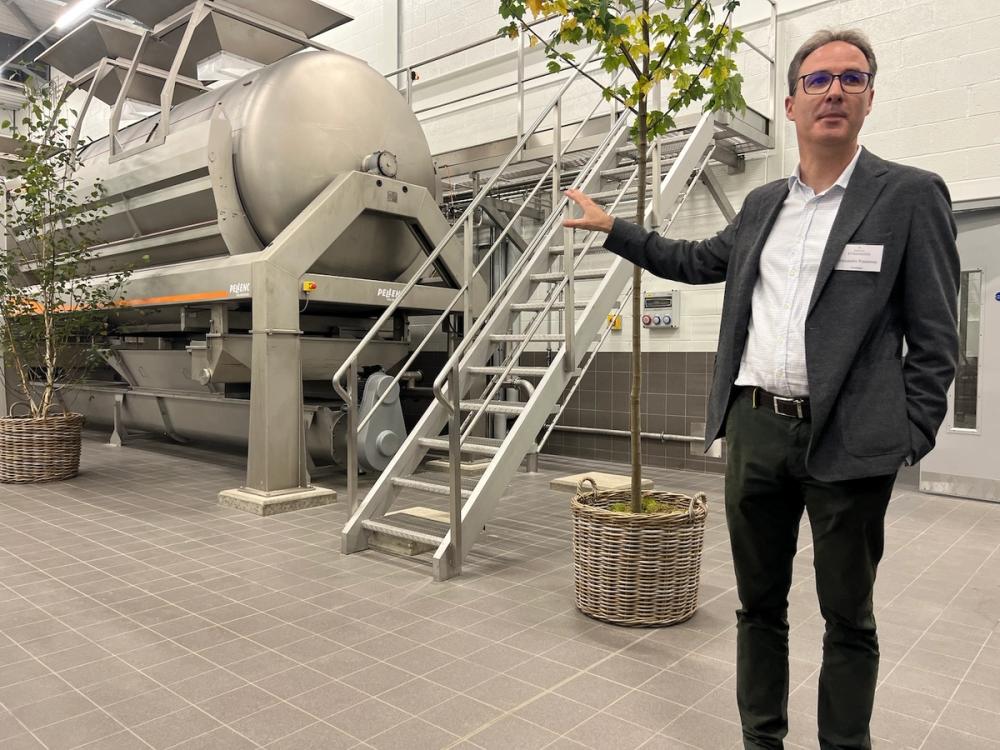
Starting from scratch is a Champagne chef de caves dream. Alexandre Ponnavoy, Champagne Taittinger’s chef de cave
“If you try to make a copy you make a mistake,” is how Alexandre Ponnavoy, Champagne Taittinger’s chef de cave sees the relationship between making Champagne and English sparkling wine. “You do not use the same approach, it is totally different.”
Talking to him as he showed us around the spanking new winery, he explained that his key challenges have been to handle the punchy English acidity and to make wine from such young vines – the first ones were planted in 2017 with the first harvest coming in 2019 – in Champagne the average age of the vines he makes Taittinger Champagne with are 45 years old.
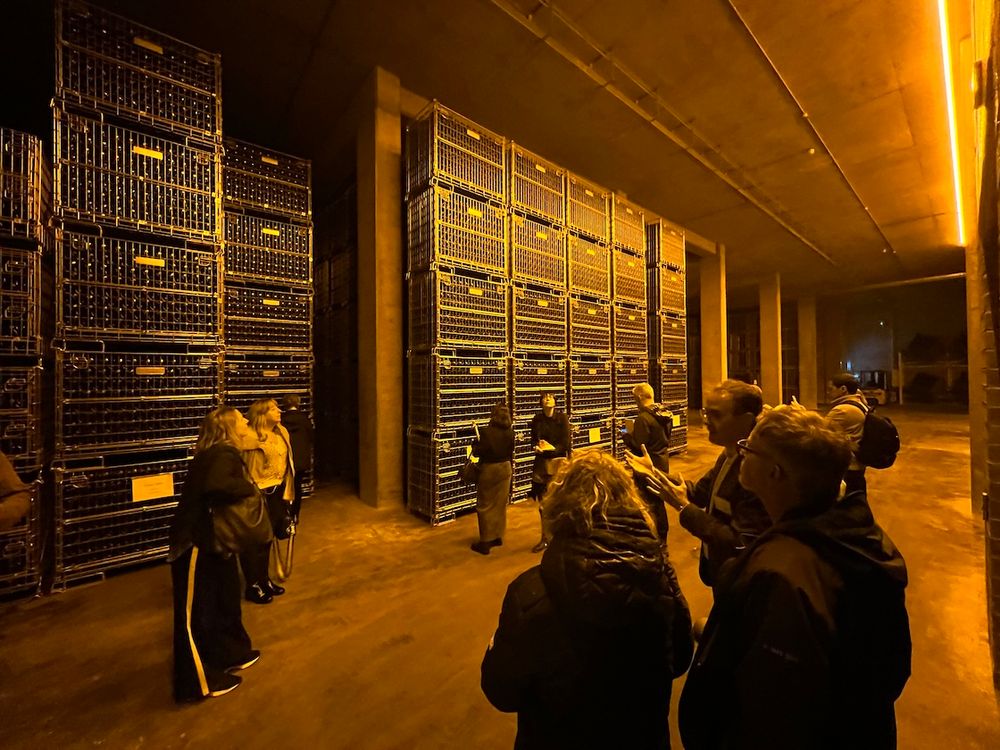
Built underground the storage cellars can hold 1.5 million bottles with no need for artificial cooling.
The decision to go the route of malolactic fermentation, then, is a good choice, it is too early to produce a vintage wine or a Rosé but they will no doubt come, and the other consideration is the percentage of Chardonnay in the Classic Cuvée which is currently 35% but will rise as the younger Chardonnay vines reach maturity.
The one thing he described as “a dream”, however, was making a new wine from scratch in a new winery and using new vineyards which he has had a hand in the design of. In Champagne, in particular, this sort of opportunity is pretty unique for a chef de cave where change is a slow-moving beast.
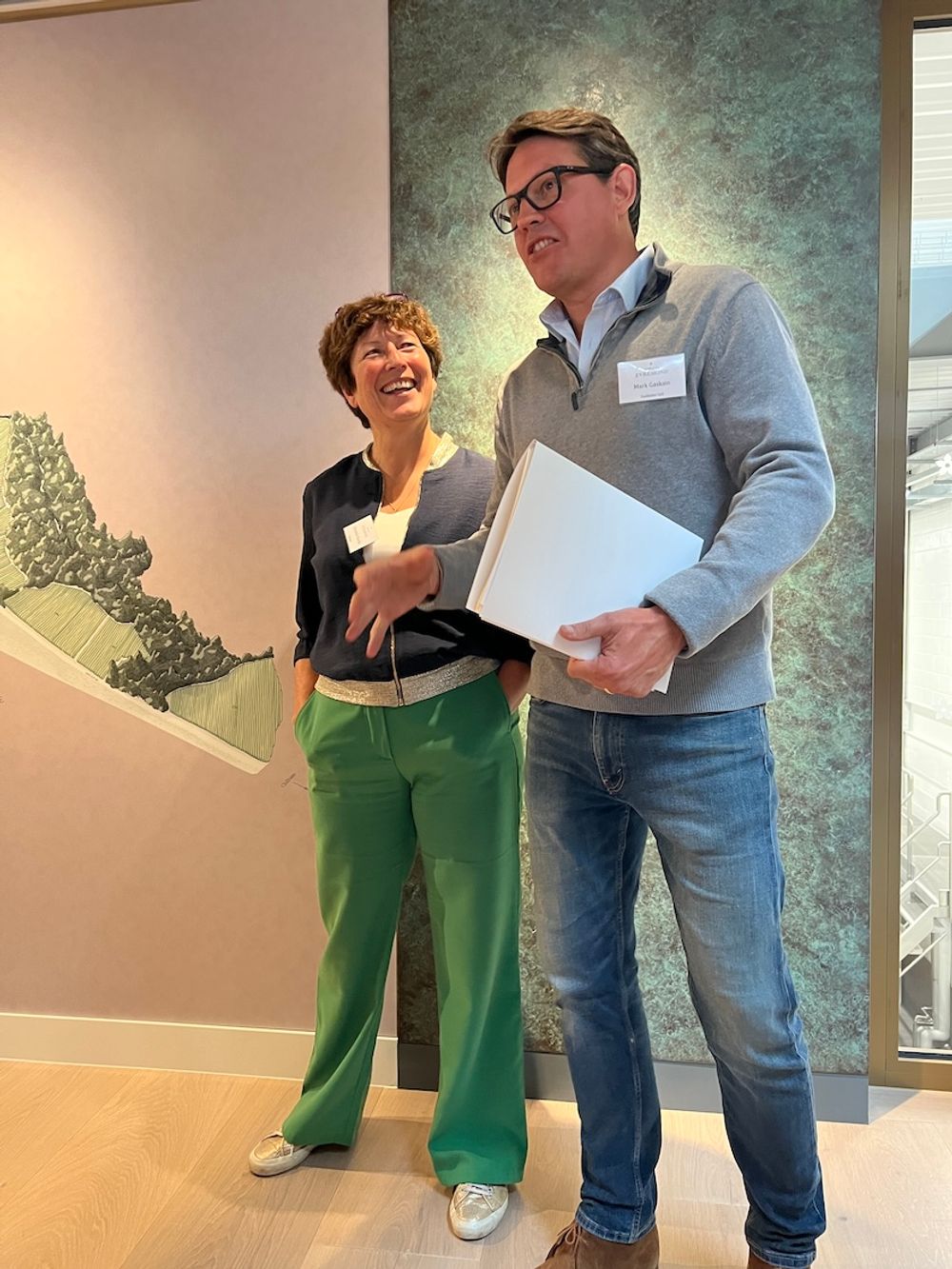
A key relationship: Christine Rinville, Taittinger’s vineyard director and landowner Mark Gaskain.
Much was made at the press launch of the collaboration between Ponnavoy, Christine Rinville, Taittinger’s vineyard director and Mark Gaskain, one of the UK’s largest fruit growers who sold Evremond the land and continues to have an unspecified but key role in sharing in-depth knowledge of the land and overseeing the vineyard teams. The fact that grapes here mature between the Gala apple and Raeburn apple harvests is a nice-to-have.
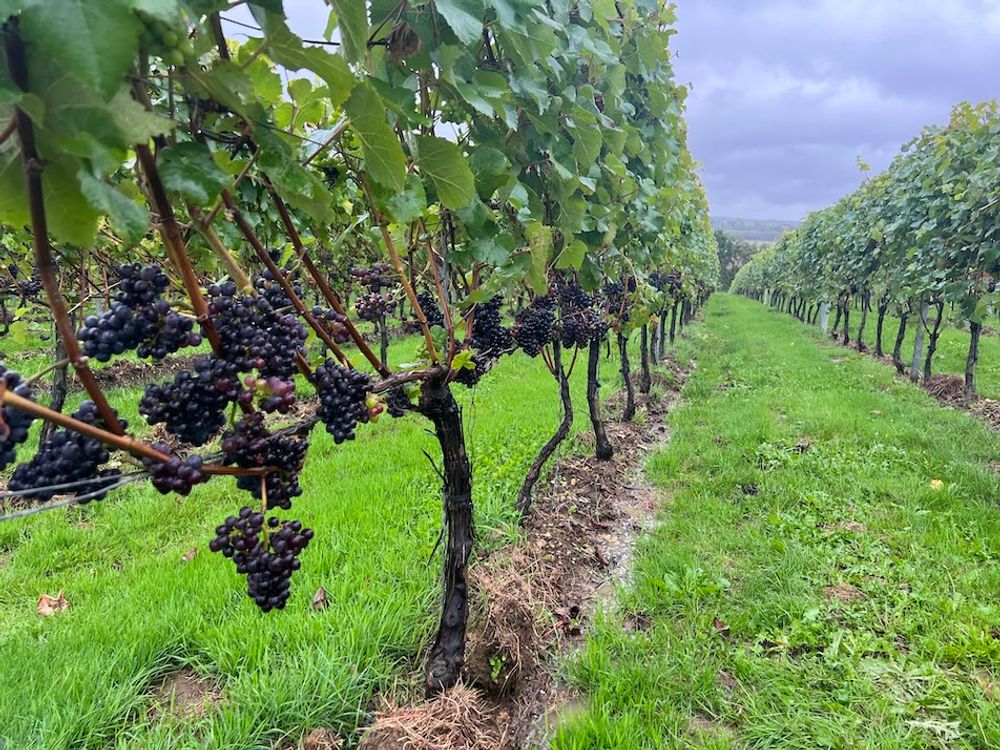
Pinot in front of the winery had great taste. Although 2024 has been a challenging growing season mildew has been lessened with 2m-apart vine planting.
Rinville explained that, while there were some things which were the same between Champagne and Chilham there had been a lot to learn about: the specific terroir (the free-draining chalk soils being an extension of the Paris Basin but with silex present being one of the many differences); about the maritime climate (which is different from Champagne’s continental climate); and also the human aspect (working practices, customs and so on).

Patrick McGrath MW will be spearheading the project moving forwards with Vitalie Taittinger who, as President of Taittinger has inherited the project from her father.
Being sited in an area of outstanding beauty and, with Taittinger’s sustainable practices, this key triumvirate has also worked closely with the landscaping architect to plant hundreds of trees, create wildlife corridors and generally encourage biodiversity.
So what does Domaine Evremond Classic Cuvée taste like?
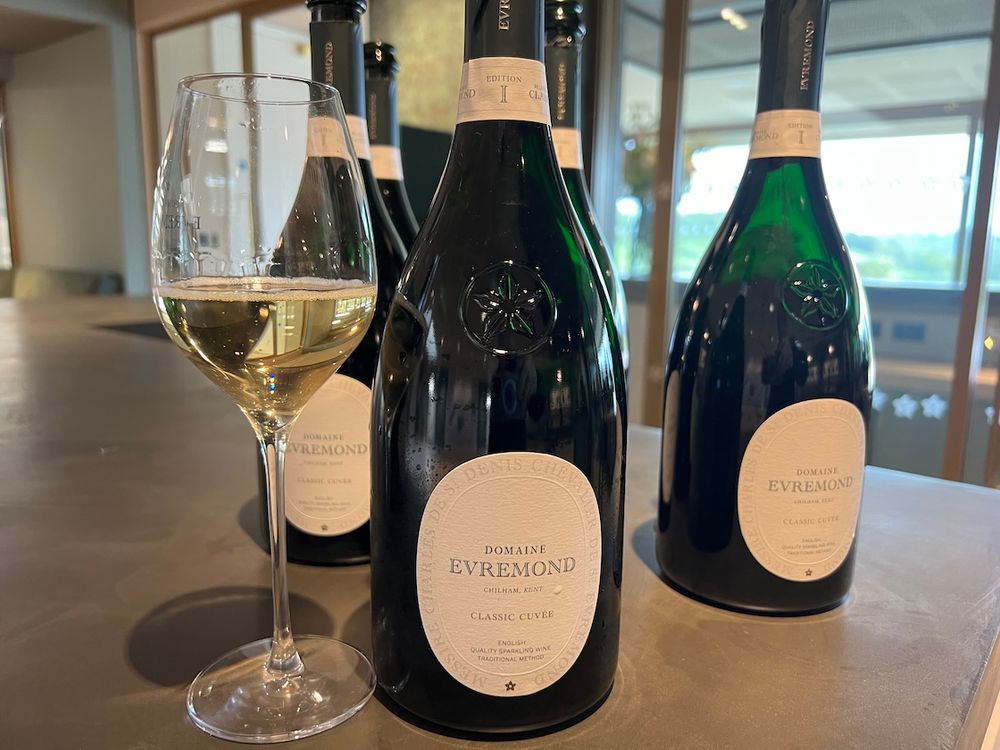
The bottle design for Domaine Evremond Classic Cuvée is based on Taittinger's Californian Blanc de Blancs
55% Pinot Noir 35% Chardonnay 10% Pinot Meunier. Dosage 7g/L. 2020 base vintage (80%) 2019 (20%). Steel fermented and aged. Disgorged August 2024. Released Spring 2025, £50 RRP.
By the time Domaine Evremond Classic Cuvée is released next Spring it will have had an extra 7-8 months in the bottle so this was very much a sneak peek.My immediate reaction was how generous the wine is – it offers so much from the surprisingly complex nose to the breadth of the palate. The mousse is youthful at first and then settles into a noble, fine bead; there’s a lovely combination of silex and chalk, a slightly smoky, white pepper note counter-balancing the white fruits and touch of apple blossom; the palate is fresh, but with a ripeness that balances the acidity beautifully and really speaks of Kentish fruit. Malolactic fermentation and 7g/L dosage make it a crowd pleaser but it’s still complex, serious and delivers to the aficionado.
I’m liking the name, label and design, with the distinctive bottle a copy of Taittinger’s Californian wine, Domaine Carneros Le Rêve Blanc de Blancs.
At a £50 price point it has some serious competition, especially as a non-vintage. Around that price you can pick up some serious vintage fizz with bottle age from the likes of Breaky Bottom, Wiston, Sugrue South Downs and Hundred Hills just to name a few, but what I do like is that it is distinctive, feels Kentish and is not a copycat Taittinger.
Hats off team Evremond! Seriously, what’s been achieved in such a short space of time with such sympathy to the surrounding environment is pretty gobsmacking. Cheers! Santé!
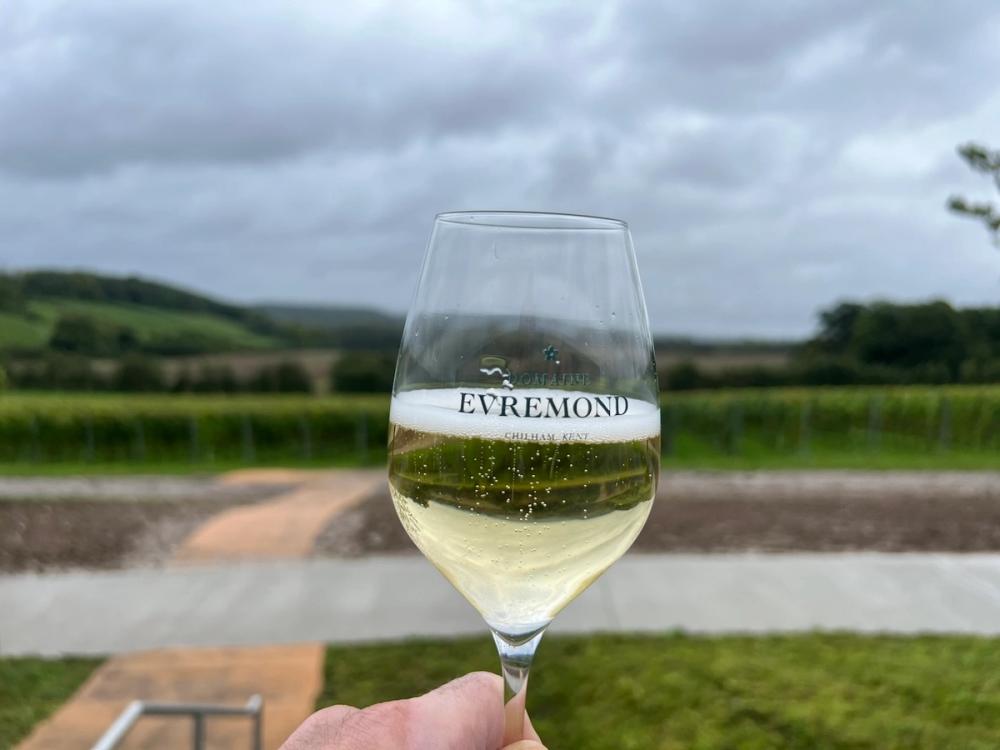
For more information about Domaine Evremond visit its website here.
